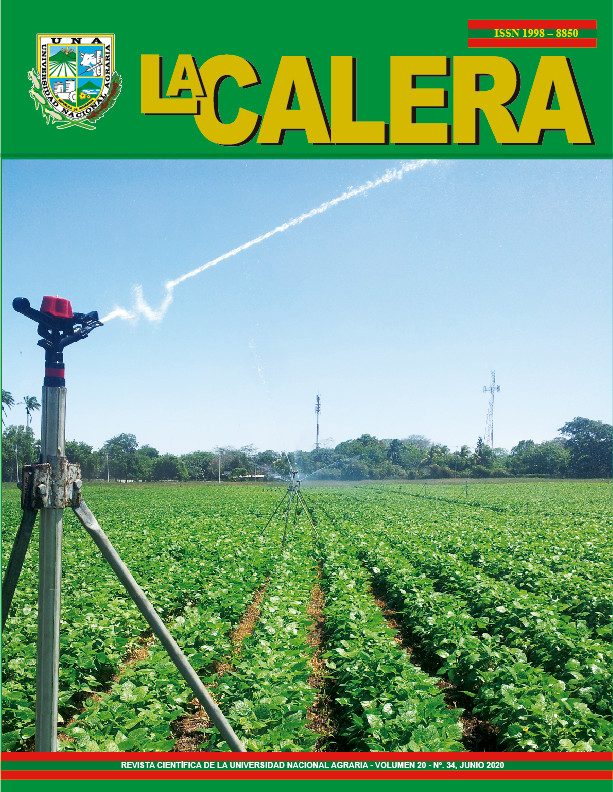Forest biomass, carbon fixed and stored in forest system and silvopastoral system in seven farms of the municipality of Mulukukú, RACN, 2018
DOI:
https://doi.org/10.5377/calera.v20i34.9745Keywords:
Sampling Plot, biomass, stored carbon, CO2 fixedAbstract
Basic information on the capacity of forest and silvopastoral systems to fix and store carbon in aerial biomass will guide producers to conserve and manage their areas. The present study was carried out in seven producer farms in the municipality of Mulukukú, Siuna, Autonomous Region of the Northern Caribbean (RACN), with the objective of determining the carbon fixed and stored in the aerial biomass present in the tree component in forest and silvopastoral systems using non-destructive methods, identification of the most representative species and the determination of forest biomass, fixed and stored carbon. An inventory design was carried out in Permanent Sampling plots (PMP); in the forest system three plots of 50 x 50 m, two on the La Ceiba farm and one on the Regalo de Dios farm. In the silvopastoral system, plots of 10 x 25 m, two for each farm for a total of 14 plots. The density of the used wood of 0.5 g cm3 converted to kg m3 and an expansion factor of 1.20 for aerial biomass (branches, leaves) established by FAO (1997 and 1998). For the stored carbon, the fraction of 0.5 was used assuming that 50% of biomass is carbon. The fixed CO2 was calculated based on the carbon of the wood multiplied by 3.67 that comes directly from the atomic weight of the CO2. As a result of the investigation; the forest system species richness is recorded in 238 individuals, belonging to 40 species, 38 genera and 28 families. Silvopastoral systems 136 individuals, 24 species, 24 genera and 23 families. The average dry biomass for the forest system is 85.62 69 t ha-1, 157.12 t ha-1 CO2 and 42.80 t ha-1 carbon, silvopastoral system 20.05 t ha-1, 36.79 t ha-1 CO2 and 42.80 t ha-1 carbon. The forest system registers a higher average value of dry biomass, fixed and stored carbon dioxide per hectare, higher than those found in silvopastoral systems since the farms show differences in the number of trees per hectare, and the technified management by the owners.
Downloads
622
HTML (Español (España)) 571
EPUB (Español (España)) 166
XML (Español (España)) 108

